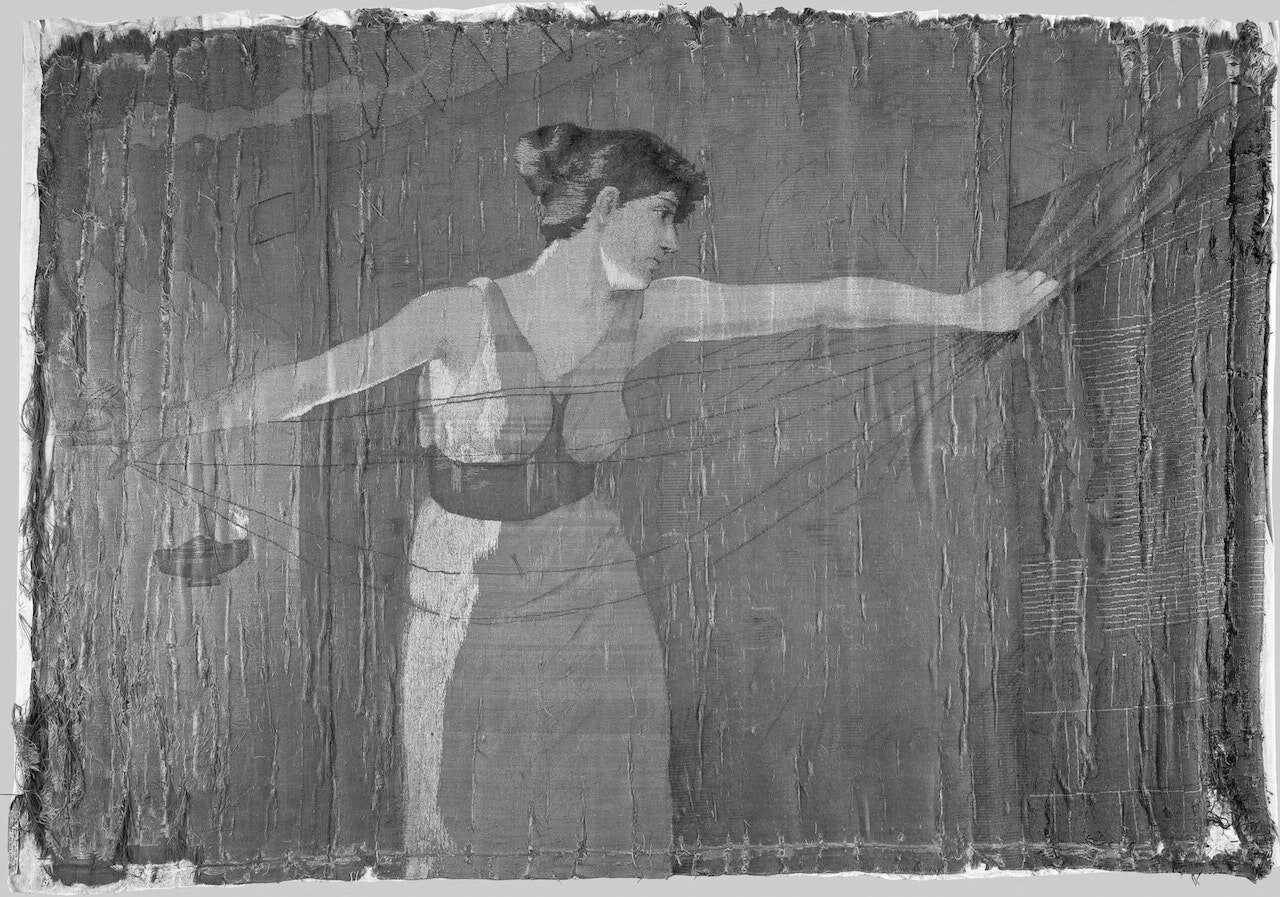#27: Penelope and the Textile Arts
#27: Penelope and the Textile Arts
29 January 2021
I chose Penelope as the subject of this month’s letter not because there are no patron saints for embroidery (looking at you, St. Clare of Assissi and St. Rose of Lima), but because I think the kind of textile art that Penelope did is very much akin to what I’ve been up to…for the entirety of quarantine.
Penelope is Odysseus’ wife, and the entire time he is at Troy and then traveling slowly home again, she puts off the houseful of suitors, telling them that she would marry one of them when she had finished weaving a funeral shroud for her father-in-law.
So these men urge on my marriage, and I wind a skein of wiles. First some god breathed the thought in my heart to set up a great web in my halls and fall to weaving a robe—fine of thread was the web and very wide…Then day by day I would weave at the great web, but by night would unravel it, when I had let place torches by me.
There’s so much here to love on the language level alone—Penelope’s “skein of wiles,” like a skein of yarn, the weaving described as a web, and Penelope in the center of it, weaving and unweaving.
She held her suitors off for four years in this manner. I don’t know much about weaving, but if it’s anything like knitting, like embroidery, the unmaking is just as much work, if not more, than the making of it, requires just as much of your mind to stay focused, just as much attention.
I’ve been endlessly preoccupied with textile arts this quarantine. I’ve picked up and put down weaving, started a blanket, finished a sweater, am about eight inches of sleeve away from finishing another sweater, started embroidery projects, made a dress and re-lined a coat. I do my fair share of un-making, not to will away suitors but to fix mistakes, reeling back row after row of embroidery, using my needle to pick at diminutive stitches. I’ve switched my reading habits to be almost entirely Kindle-based so I can knit furiously while balancing the gadget on my knee, deploying a pinky to jab the page over every minute or so.
While in normal times I made a few things a year, I would also put them down for long stretches of time, let my hands be idle, stretch my fingers, let myself recuperate from tendinitis with rest. These days, I cannot let my hands be idle. I churned out my first pair of socks the tense week of waiting for election results, if my wrists or forearms begin to complain I’ll simply switch crafts—knitting to embroidery until my thumb pads are callused, embroidery to knitting until my hands tense up, paint-by-numbers when I can’t take either, hand-stitching if I have a day I don’t know how to fill.
What isn’t visible in that little clip from the Odyssey is what Penelope’s house looked like, as she wove and unwove. The men that occupied it were boorish and loud, demanded her hospitality, used up her resources, had an aura of menace and death about them. And to keep this looming menace at bay she used women’s work—weaving and unweaving, the creation and de-creation of an object to keep herself and her son safe, to mourn a great man. There’s something about her needing to be seen as busy at her loom to keep the suitors away, something about the performance of progress that needed to be carefully unraveled every night. I set up these comparisons and I almost don’t want to finish them because of how embarrassingly self evident they seem. You know what the suitors are and stand for, you know what it is to be stuck behind your loom making and unmaking your work, you know what it is to wrap up grief in the threads of your weaving. But here: let me finish this for you.
I keep my hands busy because it keeps anxiety at bay. I finish projects, plenty of them, because there’s a mind-emptying performance of busyness that my work allows. There’s a deep pleasure in finishing a beautiful, useful object I barely had to think about save to count and measure, which has something to do with the blankness your mind takes on as you’re counting the stitches for your lace. I’ve been knitting and sewing and embroidering because what else is there to do but push yourself through fabric, to anchor yourself to existence with a thousand tiny stitches, to send little gifts to friends in the mail.
In some ways, this letter pairs well with November’s letter on cooking and care and love, but it feels really important to say that unlike cooking, the process here is infinitely more important than the product. It’s a practice, like so many people have taken up lately of contemplation. The body in repetition so the mind can empty, the hands busy so the feet can be grounded in the moment.
Winter ends, eventually, but for now we can wander out into the snow, wrapped up in handmade scarves.

